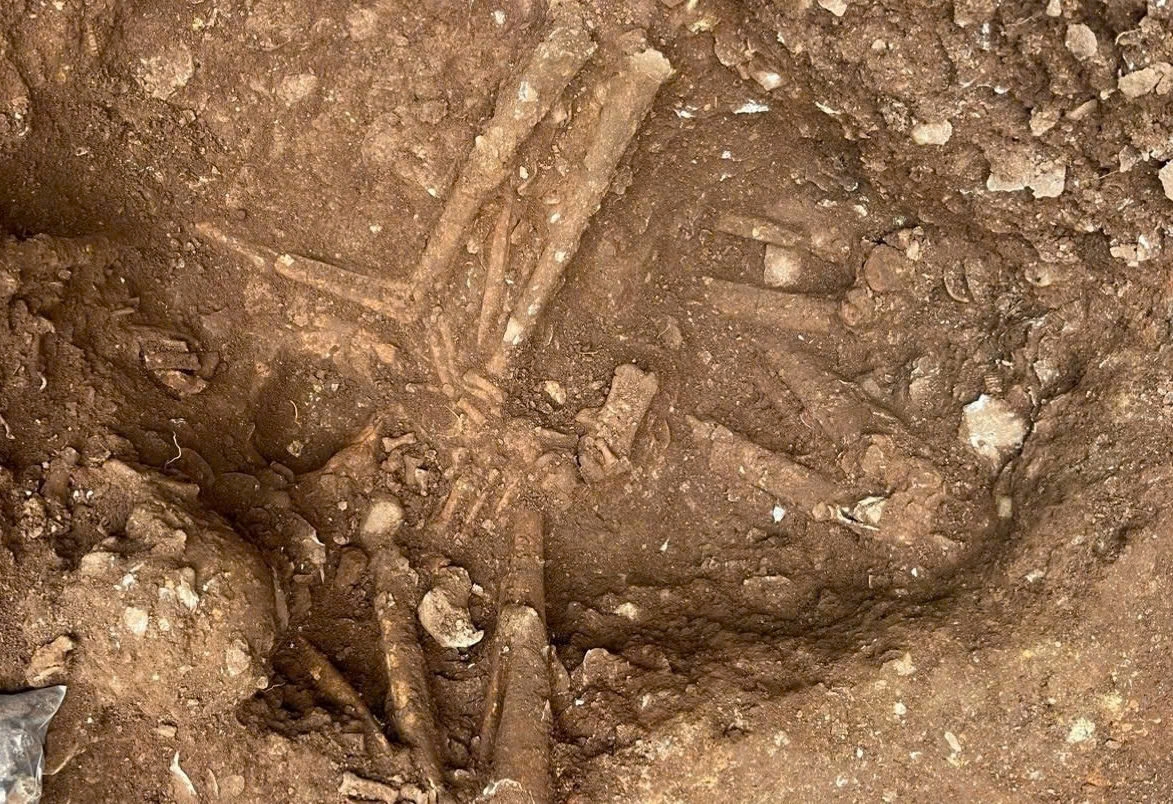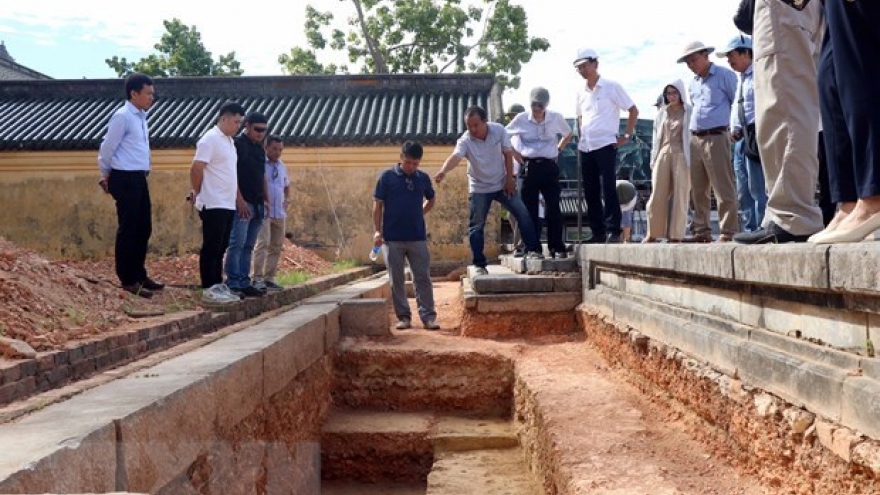Prehistoric human remains unearthed in central Vietnam
VOV.VN - Archaeologists have uncovered nine prehistoric human remains and numerous valuable artefacts at the Quynh Van archaeological site in Quynh Luu district, central Nghe An province.

The findings are believed to date back approximately 4,000 to 6,000 years and are linked to the Quynh Van culture, a late Neolithic civilization, according to archaeologists.
The recent excavation, led by Nghe An Museum in collaboration with University of Social Sciences and Humanities under Vietnam National University, Hanoi, and international experts from the Australian National University, covered two 18m² pits. Among the discoveries were stone tools, grinding stones, hearths, and flexed burials, a hallmark of ancient burial customs.
Notably, three skeletons were found stacked in layers, separated by mollusc shells that show evidence of early coastal habitation. Some graves also contained shell jewellery.
The Quynh Van culture, first identified in 1930, spans the coastal plains of Nghe An and Ha Tinh provinces in central Vietnam and is known for its shell mounds and evidence of a hunting-gathering lifestyle.
Nguyen Trong Cuong, director of Nghe An Museum, said the excavation is ongoing and is expected to conclude by the end of April. All discovered artefacts and remains will then undergo radiocarbon (C14) dating and further specialized analysis.




